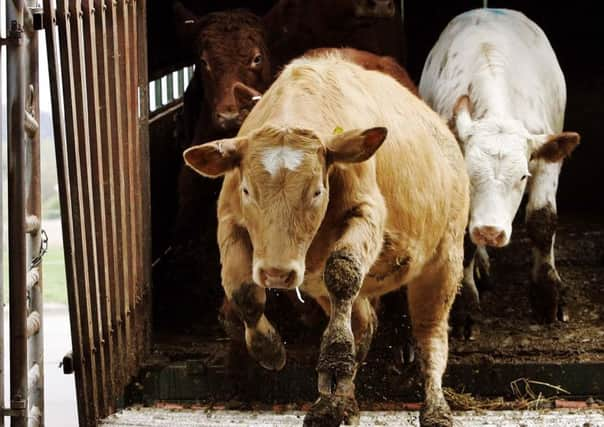Our producers baffled by their beef over price cut


Last week there was a two pence per kilo deadweight fall in the average price for steers across the whole of the UK while the heifer price fell more slowly.
Overall the current average Scottish beef price is 7%-8% lower than it was 12 months ago,
Advertisement
Hide AdAdvertisement
Hide AdWhile Stuart Ashworth, economics guru with Quality Meat Scotland (QMS), accepted that the fall in value was a source of concern to farmers, he said it was important not to be misled by average prices which could disguise the nuances of the market place.
“A look at some of the more detailed grade prices, for example, shows a lower decline in Scottish prices for R4L grade cattle – the industry benchmark – than for all steers. Indeed for some categories of heifers the price increased on the week.”
The reason these differences have occurred, he said, was because the prices reported were the average for all the cattle in that grade or of that gender.
“This means that a lower delivery of some grades of cattle or a change in proportion of heavier carcases from one week to another within the category can influence the average of that group of cattle. This factor is particularly relevant given the increased price penalties for carcases over 420 kg.”
The seasonal variation in the Scottish premium, Ashworth claimed, was a normal trend.
Listing another factor affecting the current price of beef in Scotland, he said historic data for carcase weights in Scotland compared with the rest of the UK showed that Scottish-slaughtered animals were generally heavier than the UK average.
On this same topic, Ashworth added carcass weights had also been increasing more quickly in Scotland than across the rest of the UK over the past five or six years.
“The average Scottish price is more likely to be influenced by the price of heavy cattle than across the UK as a whole. Indeed in late autumn the difference between a Scottish average price and the England and Wales market price widens.
“This can be explained by the switch in autumn as supplies of 28 to 30 month old, heavier animals run out and 18 to 20 month old, lighter animals arrive at abattoirs in greater numbers.”
